Hiring today is more competitive, complex, and fast-paced than ever, and relying on manual processes simply isn’t enough. If your team is struggling to keep up with high applicant volumes, inconsistent screening, or slow decision-making, the issue might not be your talent pool; it’s your tech stack.
A smart HR applicant tracking system streamlines your recruitment process, enhances the candidate experience, and reduces time-to-hire.
In this article, we compare the top ATS platforms for 2025, helping you identify which solution fits your business best, whether you’re scaling a team, upgrading legacy systems, or building a modern recruitment function from the ground up.
What is an Applicant Tracking System (ATS)?
An Applicant Tracking System (ATS) is recruitment software designed to simplify and organise the hiring process. It helps you manage job postings, applications, candidate communication, interview scheduling, and compliance, all from one centralised platform.
The job market today is highly competitive and rapid, where efficiency and accuracy are non-negotiable. A well-implemented HR applicant tracking system ensures your hiring process is streamlined, consistent, and scalable.
Core Functions of an ATS
An ATS acts as your recruitment command centre, supporting you at every stage of the hiring journey. Here’s how it works:
- Job Posting Management: Publish openings simultaneously on your website, job boards, and social platforms, saving time and maintaining brand consistency.
- Application Tracking: Automatically collect and organise candidate applications, filter out unqualified profiles, and move suitable candidates through customised hiring stages.
- CV Screening & Parsing: Extract key information from resumes to create structured candidate profiles for easier evaluation. Many platforms support keyword-based filtering to align applicants with job requirements.
- Collaboration Tools: Share feedback, rate candidates, and coordinate interviews across hiring teams in real time.
- Candidate Communication: Send emails, alerts, and interview invites directly through the platform, ensuring no touchpoint is missed.
- Reporting & Compliance: Generate hiring reports, track diversity metrics, and ensure GDPR/local labour law compliance through audit-ready records.
Whether you’re a growing SME or an enterprise hiring at scale, investing in the right HR applicant tracking system helps you attract better candidates, hire faster, and remain compliant, without burning out your recruitment team.
But what’s driving the urgent need for these systems now more than ever?
Why HR Applicant Tracking Systems Are Critical in 2025
The pressure to hire the right people, quickly and compliantly, has never been higher. With talent shortages in key sectors, hybrid workforces, and soaring applicant volumes, your recruitment process must be agile, consistent, and data-driven.
Here’s why adopting an ATS is essential for hiring success in 2025.
1. Candidate Expectations Have Changed
Top talent expects a fast, transparent, and seamless hiring experience. Long application forms, delayed feedback, and missed follow-ups can turn qualified candidates away.
- Modern ATS platforms offer automated responses, self-scheduling for interviews, and personalised communication at scale.
2. The Volume of Applications Is Overwhelming
Remote and hybrid roles attract far more applications than traditional in-office jobs. Without automation, manually sorting CVs is not only slow but also prone to oversight.
- ATS software helps you screen thousands of CVs in minutes, using filters like skills, experience, and location.
3. Compliance and Data Privacy Are Non-Negotiable
With evolving data protection regulations (e.g., GDPR, CCPA), keeping applicant data secure and audit-ready is vital.
- ATS platforms store application records, interview notes, and hiring decisions in a centralised, compliant database.
- You also benefit from features like candidate consent tracking and automated data retention policies.
4. Recruitment Metrics Matter More Than Ever
Leadership wants visibility into hiring performance. They want to know:
- How long does it take to fill roles?
- Where do the best candidates come from?
- Why do certain candidates drop off?
An applicant tracking system gives you real-time data to:
- Optimise job ad spend.
- Identify bottlenecks.
- Make evidence-based hiring decisions.
5. Hiring Bias Is Under the Spotlight
In a climate where diversity, equity, and inclusion are business priorities, not just HR initiatives, your hiring system must support objective evaluation.
- Many ATS tools now include blind screening options, standardised scoring, and bias detection features.
6. Recruitment Teams Are Leaner, But Expectations Are Higher
Recruiters today are managing more roles, across more departments, with fewer resources. You can’t afford inefficiencies.
- With the right ATS, you gain workflow automation, task reminders, and collaborative hiring tools, all without adding to your headcount.
- This leads to shorter time-to-hire and better quality-of-hire, even in high-growth phases.
An HR applicant tracking system is now essential for better hires, stronger employer branding, and future-ready teams. Without one in 2025, you’re falling behind.
So what should you look for when evaluating ATS platforms in 2025?
Key Features to Look for in a Modern ATS
When evaluating HR applicant tracking solutions, it’s essential to focus on features that directly impact efficiency, compliance, and the candidate experience.
Here’s what you should prioritise in 2025:
1. CV Parsing and Intelligent Screening
Manual CV review slows down hiring and risks unconscious bias. Modern ATS platforms offer built-in parsing tools that extract key data and rank candidates based on skills, experience, and job fit.
- Saves time by automatically scoring and shortlisting candidates.
- Reduces human error in early-stage screening.
- Enables standardised, criteria-based evaluations.
Many platforms support keyword-based filtering to align applicants with job requirements. Educating applicants on optimising their resumes can improve match quality. Share this ATS resume guide with candidates for better results.
2. Customisable Recruitment Pipelines
Every company has its own hiring workflow. Look for ATS platforms (like Hiresome or RecruiterPal) that allow you to:
- Create role-specific hiring stages.
- Set permissions for different hiring managers.
- Trigger automated actions between steps.
This ensures the system fits your process, not the other way around.
3. Collaboration and Communication Tools
Hiring is a team sport. Your ATS should enable seamless communication between HR, hiring managers, and candidates.
- Commenting, feedback, and scoring tools for collaborative decision-making.
- Automated interview invites and reminders.
- Internal messaging features or integrations with Slack/Microsoft Teams.
4. Integration with Job Boards and HR Tech Stack
A disconnected system leads to duplicated work. Choose an ATS that integrates with:
- Job boards like LinkedIn, Indeed, and niche industry sites.
- Background check and assessment tools.
- Your HRIS, CRM, or payroll system.
5. Mobile Access and Candidate Self-Service
With hiring managers and candidates often on the move, your ATS must be mobile-optimised.
- Mobile apps or responsive web access for reviewing applications and scheduling interviews.
- Candidate portals for application tracking, document uploads, and status updates.
6. DEI and Bias-Reduction Features
Diversity and fairness aren’t just values, they’re hiring priorities. ATS platforms like X0PA AI and Param.ai include:
- Blind screening functionality (e.g., hiding name, photo, and school).
- DEI analytics to track progress.
- Structured interview templates for consistency.
7. Interview and Video Assessment Integration
Especially in remote-first settings, built-in or integrated video tools save time and create a more scalable process.
- One-way video interviews with structured questions.
- Panel interview scheduling and live recording.
- Candidate scoring based on response quality.
8. Reporting and Compliance Dashboards
Tracking what works (and what doesn’t) is essential for continuous improvement and legal compliance.
- Real-time dashboards for source effectiveness, time-to-fill, and pipeline health.
- Built-in compliance checks (e.g., GDPR tracking, audit logs).
- Exportable reports for leadership or board review.
Focusing on these core features ensures your HR applicant tracking system isn’t just efficient, but future-ready, giving you the control, insight, and speed you need to compete in today’s fast-paced hiring market.
Now that you know what to look for, let’s compare the best ATS solutions available in 2025.
Top HR Applicant Tracking Systems Compared
With the recruitment landscape evolving rapidly, choosing the right HR applicant tracking system can significantly impact how efficiently you attract, assess, and hire top talent.
Below is a carefully curated comparison of 10 leading ATS platforms that stand out in 2025, for their features, flexibility, and suitability for various business sizes and industries.
1. Ceipal
Ceipal is a powerful recruitment and staffing-focused ATS that combines candidate sourcing, CRM, and vendor management into one unified platform.
Top Features:
- AI-based resume parsing and scoring.
- Advanced sourcing with job board integration.
- Diversity and compliance tracking dashboards.
- Vendor management system (VMS) module.
Best Suited For:
Recruitment and staffing agencies, high-volume sourcing teams
Why It Stands Out (USP):
Ceipal bridges sourcing and tracking seamlessly, offering enterprise-grade scalability with real-time sourcing insights.
2. Comeet
Comeet is a collaborative ATS platform that helps companies manage structured hiring with input from multiple stakeholders.
Top Features:
- Role-specific hiring workflows.
- Team-based scorecards and comments.
- Candidate progress tracking.
- Automated interview scheduling.
Best Suited For:
Mid-sized businesses with cross-functional hiring teams
Why It Stands Out (USP):
Its emphasis on teamwork and structured processes reduces hiring bias and improves coordination across departments.
3. Elevatus
Elevatus is a tech-forward ATS with built-in AI-powered video interview and screening tools for digital-first hiring.
Top Features
- Video interview automation.
- AI-based candidate shortlisting.
- Branded career page tools.
- Analytics for recruiter and candidate performance.
Best Suited For:
Remote-friendly teams, tech and digital companies
Why It Stands Out (USP):
Combines recruitment automation with video interviewing in one platform, enhancing candidate screening at scale.
4. Recruit CRM
Recruit CRM offers a dual-function platform with ATS and CRM tools, ideal for agencies managing clients and candidates simultaneously.
Top Features:
- Custom pipeline stages and email workflows.
- Client and candidate record management.
- Resume formatting and job publishing.
- Reporting dashboards.
Best Suited For:
Recruitment firms and freelance consultants
Why It Stands Out (USP):
Designed for recruiters by recruiters, it offers real-time tracking and client relationship features under one roof.
5. Manatal
Manatal is a user-friendly ATS known for quick implementation, AI-driven suggestions, and strong sourcing tools.
Top Features
- Drag-and-drop pipelines.
- Social media profile enrichment.
- Career page builder.
- AI-based candidate recommendations.
Best Suited For:
Small to medium businesses in need of a fast, affordable solution
Why It Stands Out (USP):
Balances simplicity with intelligence, making recruitment smarter without overwhelming new users.
6. GrabJobs
GrabJobs is built for mobile-first, high-volume hiring perfect for industries like retail, F&B, and hospitality.
Top Features
- Chat-based job applications.
- Auto-scheduling of interviews.
- Mobile-optimised application process.
- Real-time analytics.
Best Suited For;
Service-based businesses with high turnover or seasonal hiring
Why It Stands Out (USP):
Streamlines frontline recruitment using automation and mobile-first UX, cutting hiring time significantly.
7. TalentRecruit
TalentRecruit is a full-suite ATS that caters to complex hiring workflows, supporting everything from sourcing to onboarding.
Top Features:
- AI-based ranking and filtering.
- Offer letter generation and e-signatures.
- Assessment tool integration.
- Compliance documentation and reporting.
Best Suited For:
Large enterprises with multi-role, multi-location recruitment needs
Why It Stands Out (USP):
End-to-end automation for large-scale, multi-layered recruitment operations.
8. iSmartRecruit
iSmartRecruit is a recruitment-focused platform with ATS and CRM capabilities, supporting international agencies and internal HR teams.
Top Features:
- Email/calendar integrations.
- GDPR-ready data storage.
- Custom workflows for different teams.
- Multi-language interface.
Best Suited For:
Recruitment agencies and global hiring teams
Why It Stands Out (USP):
Highly customisable, multilingual platform with features tailored for cross-border talent acquisition.
9. Pitch N Hire
Pitch N Hire offers an all-in-one recruitment suite for growing businesses, combining ATS functions with hiring automation.
Top Features
- Branded career pages.
- Intelligent applicant ranking.
- Collaborative dashboards.
- End-to-end process tracking.
Best Suited For:
Startups and SMBs scaling their teams
Why It Stands Out (USP):
Offers enterprise-grade features at a startup-friendly price, ideal for lean teams wanting full recruitment visibility.
Each of these platforms addresses a unique recruitment pain point, whether you’re aiming to scale your team, hire faster, improve collaboration, or reduce bias.
With all this information, how do you decide what’s right for you?
How to Choose the Right ATS for Your Organisation
With dozens of options available, the key is to focus on what will deliver practical value for your organisation, not just today but in the years ahead.
Here’s how to make an informed decision:
1. Define Your Recruitment Goals
Start with the outcomes you want to achieve. Are you trying to reduce time-to-hire? Improve the candidate experience? Centralise processes across multiple locations?
Ask yourself:
- How many roles do we hire for each year?
- Are we scaling across regions or departments?
- Do we need built-in screening tools, or do we already use external assessments?
2. Match Features to Your Hiring Complexity
Not every business needs the most advanced AI or video interview tools. What you need is relevance.
- If you’re a start-up or SME: Look for platforms like Manatal or Pitch N Hire that offer ease of use, affordable pricing, and quick deployment.
- If you’re a growing mid-sized company: Solutions like Comeet or Recruit CRM provide flexibility and collaboration features for scaling teams.
- For enterprise-level recruitment: Platforms like X0PA AI or TalentRecruit support high-volume hiring, compliance automation, and predictive analytics.
3. Prioritise Integration and Compatibility
Your ATS shouldn’t operate in isolation. It must fit smoothly into your existing HR and IT environment.
Ensure your ATS integrates with:
- Your HRIS or ERP system (e.g., SAP, Workday).
- Job boards and social media platforms.
- Payroll or onboarding tools.
- Calendar and email services (e.g., Outlook, Gmail).
4. Evaluate Candidate and Recruiter Experience
Great technology doesn’t mean much if it’s frustrating to use. Request demos and trial access to test the user interface for both your hiring team and your candidates.
Look for:
- Simple, mobile-optimised interfaces.
- Candidate self-service portals.
- Drag-and-drop pipeline management.
- Clear visibility into hiring status for all stakeholders.
5. Check for Compliance and Data Security
Recruitment involves processing sensitive personal data. Your ATS must offer security features and support legal compliance.
Must-have compliance tools:
- GDPR-ready candidate consent tracking.
- Audit trails and role-based access control.
- Automated data deletion policies.
- Localised settings for region-specific laws.
6. Consider Future Scalability
The system you choose should support your growth, not hinder it. Choose a provider that offers:
- Modular upgrades or tiered pricing.
- International and multi-language capabilities.
- API access for future custom integrations.
- Reliable customer support and onboarding.
Always involve your end users, recruiters, HR staff, and hiring managers in the evaluation process to ensure a comprehensive and informed decision. Their feedback on usability and functionality will help ensure you choose a system that delivers lasting value.
Investing in the right HR applicant tracking system is building a hiring engine that supports smarter, faster, and fairer recruitment across your organisation.
Not ready for a full-scale investment? Explore this curated roundup of free ATS platforms to get started without the upfront cost.
Conclusion
The hiring climate is moving fast, staying organised, and giving candidates a great experience can make all the difference. Whether you’re a growing startup or a multi-region enterprise, the right HR applicant tracking system empowers your team to work smarter, reduce admin, and attract top talent with confidence.
But technology alone isn’t the solution; it’s about choosing a platform that fits your goals, scales with your business, and supports fair, data-driven hiring decisions.
Ready to find your ideal ATS? Explore verified solutions via the TeamLease Digital MarketMap or connect with our experts for tailored recommendations based on your recruitment goals and growth stage. Your next best hire starts here.






